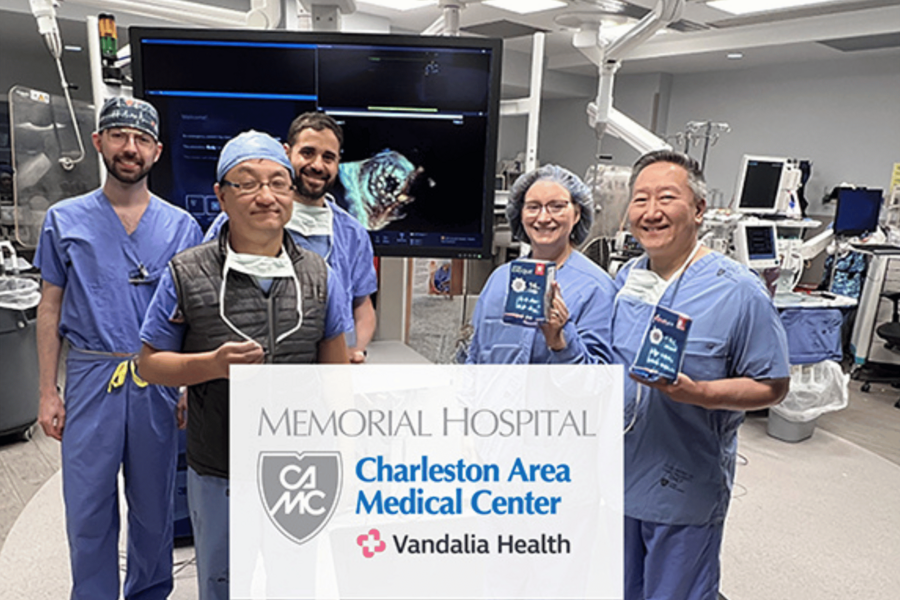
CAMC cardiologists Richard Han, MD, and Joseph Choo, MD, recently performed two transcatheter tricuspid valve replacements (TTVR) – a minimally invasive procedure where a damaged tricuspid valve is replaced with an artificial valve using a catheter inserted through a blood vessel, typically in the groin. This approach restores heart function without the need for open heart surgery. These were the first two cases of this type at CAMC.
Severe tricuspid regurgitation, where blood leaks backwards through the tricuspid valve, can lead to a variety of symptoms and potential complications, including heart failure and arrhythmias.
TTVR starts with a small incision in a vein in the patient’s leg. Through this opening, the medical team carefully guides a thin, flexible tube to the heart. The device is designed for precise placement, allowing physicians to position the new valve exactly where it’s needed. Once in place, the valve, made from advanced materials that expand to fit securely, is deployed to take over the job of the failing tricuspid valve. Special imaging technology from the cardiac imaging team is used to guide the valve to the correct placement and confirm proper functioning.

